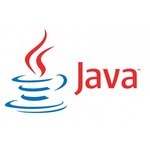很多初学者可能搞不清static方法的用法,这里我说下自己的理解:
static方法的调用不需要依靠创造类对象
由于不需要创建对象,所以static方法中不使用this关键字
静态方法中只能调用静态成员变量和静态方法,因为普通方法需要通过创建对象来调用,这一点与静态方法冲突
普通方法中可以调用静态成员变量和静态方法,可以直接通过 类名.静态方法 的形式进行调用
静态代码块,在类加载的时候就执行且只执行一次
立即学习“Java免费学习笔记(深入)”;
道理讲完了,看个实际的例子:
class Person{
static{
System.out.println("person static");
}
public Person(String str) {
System.out.println("person "+str);
}
}
public class Test {
Person person = new Person("Test");
public Test() {
System.out.println("test constructor");
}
static{
System.out.println("test static 1");
}
public static void main(String[] args) {
new MyClass();
}
static{
System.out.println("test static 2");
}
}
class MyClass extends Test {
Person person = new Person("MyClass");
static{
System.out.println("myclass static");
}
public MyClass() {
System.out.println("myclass constructor");
}
}先猜一下他的输出,再来对比一下,看看哪里不对,加深理解
test static 1 test static 2 myclass static person static person Test test constructor person MyClass myclass constructor
首先加载Test类,其中包含两个静态代码块,则按编写顺序依次输出test static 1、test static 2
main方法中,new了一个MyClass,这时加载MyClass类,MyClass类中也有静态代码块,则输出myclass static
MyClass类继承自Test类,Test类已经加载过,则不会再输出静态代码块中内容
加载完毕,开始执行Test类,在执行Person person = new Person("Test")时Person类还未被加载,加载时发现Person类也有静态代码块,则输出person static
执行Person的构造函数,输出person Test
继续执行Test,进入main方法,new MyClass(),然而MyClass继承自Test类,先执行Test类构造方法,输出test constructor
继续执行MyClass,Person person = new Person("MyClass"),执行Person类构造方法,输出person MyClass
继续执行MyClass的构造方法,输出myclass constructor
执行完毕
根据这些我总结出来以下执行顺序:
静态代码块——>父类构造方法——>子类构造方法
构造方法与new对象同时存在时,先执行new对象的构造方法。(此时注意不要产生循环嵌套,造成内存溢出)
相关文章:
以上就是java中static关键字、父类子类加载执行顺序解析的详细内容,更多请关注php中文网其它相关文章!

java怎么学习?java怎么入门?java在哪学?java怎么学才快?不用担心,这里为大家提供了java速学教程(入门到精通),有需要的小伙伴保存下载就能学习啦!

Copyright 2014-2025 https://www.php.cn/ All Rights Reserved | php.cn | 湘ICP备2023035733号